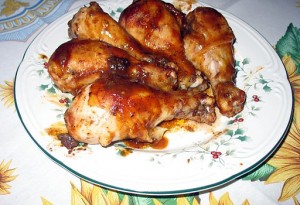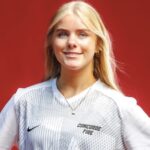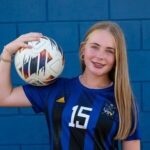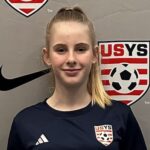What’s in that joint?
By Dr. Wendy LeBolt
Nope, not talking about that new legislation in Colorado and Washington State, sorry. I’m talking about joints of the body.
I know. There’s nothing more boring than an anatomy lecture. Trust me, I know. I’ve made students sit through hundreds of them.
I used to trick them into having fun on the first day of class. I brought in a piece of Tupperware. Not a bowl or container, but an implement with a handle and a narrow rubber end with an oddly shaped crack that ran most of the length of the rubber. I let them look, touch, smell, manipulate. No one ever knew what it was. So I asked, based on the structure, what do you think it does?
That’s called applied anatomy. That’s what coaches and athletes do. We call it sport.
Often when I work with coaches they have a poor working knowledge of the structures that allow us to move. We call these joints. (What would movement look like if we hadn’t any joints? Think rusty tin man.) Oh, they may have memorized definitions from the care and prevention portion of the coaching basics course, but don’t know how to apply that stuff. So when we talk about the hows and whys of stretching or strengthening or preventing injury, we aren’t speaking the same language. Especially if a player has an injury or an ailment, coaches should at least know the basics about what’s there and what’s gone wrong.
So, what is in a joint? Well, if you eat poultry you are already an amateur anatomist. Pull out that drumstick and thigh. You’ve seen the gristle at the end of the thigh bone – that’s hyaline cartilage. You’ve seen the white tapering substance that attaches the meaty muscle to the bone – that’s dense regular connective tissue known as tendon. If you’re the curious type, you may have examined further to see strong white “strings” that attach bone to bone – those are ligaments. Don’t eat those. And of course, you know what the bones look like. (Yep – “Chickens R Us.”)
 So, when we move at a joint – that is, when we bend or straighten a knee or rotate at the shoulder, ankle or hip, these motions are bounded and guided by these connecting structures.
So, when we move at a joint – that is, when we bend or straighten a knee or rotate at the shoulder, ankle or hip, these motions are bounded and guided by these connecting structures.
Bones are the main support structures. Many people are surprised to find out they are very dynamic, living structures, unlike Halloween skeletons. They are growing, remodeling and have good blood flow. This is why when they are broken, they repair themselves.
Ligaments are tough, fibrous, bendable “cords” that attach bone to bone and provide stability at the joint. They may be outside the “joint capsule” and form a sort of sleeve that supports like an anatomical brace or they may run inside the joint capsule and stabilize one bone relative to the other as the cruciate ligaments do in the knee. They have poor blood flow and are quite inelastic. This why they heal poorly and once stretched, do not return completely to their former support levels.
Tendons are supple stands that run from the sheath surrounding a muscle to a point of attachment on the bone. It is this attachment that allows the contraction of a muscle to pull on and move the bone. It also transmits stretch from muscle to fixed point on the bone and is why stretching should occur along the line of pull of tendon with bone.
Cartilage is a tough but flexible tissue. Hyaline cartilage covers the surfaces of the long bones smoothing movement at the joint. When this gets worn away or damaged, arthritis sets in. The meniscal discs in the knee joint are highly compressible but resilient fibro- cartilage which provide rigid cushioning for weight-bearing. Cartilage is avascular – that is, it has no blood supply of its own, and thus relies on fluid squeezed from the surrounding capsule for nutrients. This is why cartilage heals poorly and why warm up which facilitates lubrication of the joints is essential for joint performance.
So let’s put this into play.
The kid who sprains an ankle tears part or all of one or more ligaments. Once the ankle is sprained it will be looser and more prone to future sprains because ligaments tend to remain somewhat stretched out. To decrease future sprains, the kid should perform dynamic ankle strength training, redeveloping feel for movement, landing and change of direction. Bracing or taping is often helpful.
The kid who strains a hamstring has injured multiple fibers in the rear thigh muscle or muscle’s tendon. The muscle must be rested so the injured fibers can heal, otherwise they get tugged along with the rest of the fibers when the muscle is active. A complete rupture of a tendon is a serious injury generally requiring surgery.
The kid who tears his meniscus has disrupted the cushioning in his knee joint. The flap of cartilage (or complete tear in a more serious injury) wears on the surfaces of the bones at the joint and, if left unattended, will start the arthritic process.
So there you have a picture of how a joint works or, in these cases, what happens when it doesn’t. The miracle really is how often and how well it does work. The nearly perfect design of these structures, created to fit together, allows them to slide past one another, stabilize and cushion at a joint. In Anatomy and Physiology we call it an articulation, quite accurately as one body part “talks” to the other, so you can move as you wish. After a while it’s like two good friends – you don’t need words.
You tell me. When you see a Messi or Ronaldo or Pele or Mia or Abby or Alex, don’t you just say they were made to move? That’s sport. Thank a joint.
Editor’s note: This is the latest column from Dr. Wendy Lebolt, a longtime coach and physiologist who is the founder of Fit2Finish, a Northern Virginia-based training, fitness and rehabilitation company which works with teams and individual players to maximize health and performance. The Soccer Wire is excited to present Wendy’s learned perspectives on the mental, physical and psychological aspects of the beautiful game. Learn more about her background here.
SOCCERWIRE MARKETPLACE
- Adidas National Cup 2026
- Adidas Showcase 2025
- Adidas Preseason Clash 2025
- Capital Fall Classic 2025 - Register by October 1st
- Applications are Now Open for the 2026 Jefferson Cup
- Start the Season Strong at Loudoun Premier Cup!
- 50th Annual Rael Vodicka Memorial Tournament
- Soccer Marketing Internships at The St. James FC
- Job Opening: The St. James FC Goalkeeper Academy Coach
- Full-Time Director of Goalkeeping for The St. James FC











